
An adjustable spanner or adjustable wrench is an open-end wrench with a movable jaw, allowing it to be used with different sizes of fastener head rather than just one fastener size, as with a conventional fixed spanner. Several other names are in use, including casually imprecise use of a US trademark as crescent wrench.

The monkey wrench is a type of adjustable wrench, a later American development of eighteenth-century English coach wrenches. It was widely used in the nineteenth and early twentieth centuries but is now seldom used in the mechanical trades, having been mostly replaced by the newer style of shifting (adjustable) spanner/wrench. It is still of interest as an antique among tool collectors and is still occasionally used in maintenance and repair when it happens to be convenient. The term monkey wrench is also sometimes used loosely, usually by non-tradespeople, to refer to the pipe wrench, but tradespeople usually speak more precisely than that. A wrench with smooth jaws is not used for turning threaded pipe.
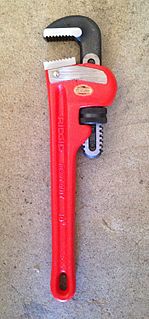
A pipe wrench is any of several types of wrench that are designed to turn threaded pipe and pipe fittings for assembly (tightening) or disassembly (loosening). The Stillson wrench, or Stillson-pattern wrench, is the usual form of pipe wrench, especially in North America. The Stillson name is that of the original patent holder, who licensed the design to a number of manufacturers. The patent expired decades ago. Another type of wrench often used on pipes, the plumber wrench, is also called a pipe wrench in some places.

A socket wrench is a type of wrench that inserts into a socket to turn a fastener, typically in the form of a nut or bolt.
Various bicycle tools have evolved over the years into specialized tools for working on a bicycle. Modern bicycle shops will stock a large number of tools for working on different bicycle parts. This work can be performed by a trained bicycle mechanic, or for simple tasks, by the bicycle owner.

A lug wrench is the name for a type of socket wrench used to loosen and tighten lug nuts on automobile wheels. In the United Kingdom and Australia it is commonly known as a wheel brace.
A hydrant wrench is a tool used to remove fire hydrant caps and open the valve of the hydrant. They are usually adjustable so as to fit different sized hydrant nuts.
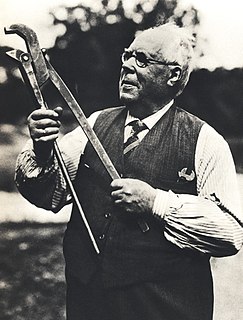
A plumber wrench is a pipe wrench used to rotate plumbing pipes. It is adjusted to different pipe diameters by rotating the key ring. Its advantage is that it grips with significant force without needing to engage a nut. However, if used carelessly, it can dent or break the pipe. It can also be used on nuts and other flat engagement points.
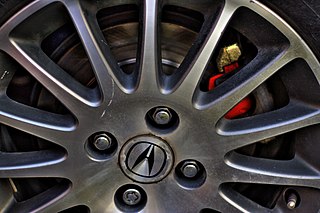
A lug nut or wheel nut is a fastener, specifically a nut, used to secure a wheel on a vehicle. Typically, lug nuts are found on automobiles, trucks (lorries), and other large vehicles using rubber tires.

A peanut butter wrench, also known as a crank bolt spanner or a crank spanner, is a single-ended box wrench or ring spanner used in cycling to tighten older 14 mm and 15 mm crank bolts, or the wheel nuts on hubs with solid axles commonly found on track bicycles, particularly the 15 mm wrench made by Campagnolo. This is the only one-piece wrench that can be used to tighten or loosen the bolt or nut which holds the crank to a square-taper bottom bracket spindle, whereas any wrench/spanner of the correct size will tighten or loosen wheel nuts.

A nut is a type of fastener with a threaded hole. Nuts are almost always used in conjunction with a mating bolt to fasten multiple parts together. The two partners are kept together by a combination of their threads' friction, a slight stretching of the bolt, and compression of the parts to be held together.

A basin wrench, sometimes called a sink wrench, is a plumbing tool that is used in confined spaces to turn fasteners that would be difficult or impossible to reach with a plumber wrench or other types of wrenches. For example, the threaded nuts used to secure faucets to sinks are often located in deeply recessed places that can only be accessed with a basin wrench.
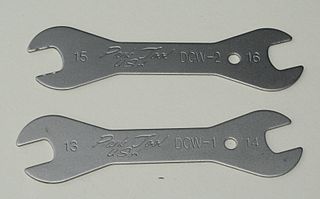
A cone wrench or cone spanner is a tool used in bicycle assembly and maintenance to adjust the cones of cup and cone bearings. Cone wrenches are thinner and lighter than most other open ended wrenches that are used to work on bicycles. They should be used only for making adjustments to cones or for other low torque applications such as centering brakes. Using a cone wrench in high torque applications such as loosening outer axle nuts may easily damage the wrench. Cone wrenches are typically about 2 mm thick, compared to approximately 7 mm for a standard open-ended wrench.

A bolt is a form of threaded fastener with an external male thread. Bolts are very closely related to screws.

A square nut is a four-sided nut. Compared to standard hex nuts, square nuts have a greater surface in contact with the part being fastened, and therefore provide greater resistance to loosening. They are also much less likely to become rounded-off after repeated loosening/tightening cycles. Square nuts are typically mated with square-headed bolts. Square nuts are used along with flat washers in order to avoid damage from its sharp edges and helps to increase the strength of the fastener. Square nuts can have standard, fine or coarse threading with platings of zinc yellow, plain, zinc clear, tin and cadmium, among others. Most can meet either the ASTM A194, ASTM A563, or ASTM F594 standard.
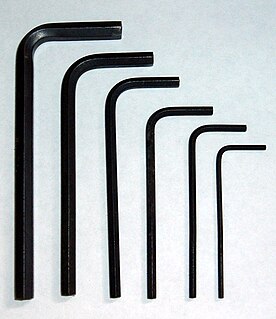
A hex key, Allen wrench or Allen key, is a simple tool used to drive bolts and screws with hexagonal sockets in their heads.

As key length is the distance between two parallel surfaces, mostly for torque transmission by positive locking serve.


















